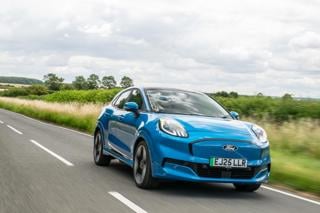The auto industry is facing fundamental change, with fully autonomous vehicles set to revolutionise car ownership and usage.
New business models will emerge and new mobility services are being developed as the first self-driving cars look set to take to the roads in the next few years.
Ian Robertson, a member of the management board at BMW, told delegates at SMMT Connected, a conference on connected and autonomous vehicles (CAVs): “This industry is at a real crossroads. Because of the enablement of technology, we’re going to see changes right across the board in the next four or five years; so much so that every aspect of our business will be affected.”
There are four key themes driving the change, according to Robertson. Autonomous, connected, electrified and shared; the ACES, he says, are going “to transform our industry”.
Autonomy, says Robertson, is “the next big thing”. He explained: “This is the change point, this is the pivoting point; this will see one of the world’s greatest industries start to transform in a way which has never happened before.”
There are five accepted technology levels which distinguish between differing levels of capability for autonomous vehicles. A level 4 vehicle can do the complete driving task but only under certain boundary conditions. A level 5 vehicle is a vehicle that does all the driving, all the time, and is capable of doing any driving that a human driver is capable of.
Today’s cars are already advanced, with cameras and radars fitted to monitor hazards ahead. Autonomous Emergency Braking (AEB) and lane departure systems are becoming standard fitments, and level 2 autonomy, with automated braking, acceleration and steering are starting to appear.
By the start of the next decade, there will be a degree of full autonomy, with the car able to take complete control and allow drivers to carry out other tasks, and by 2025 it is predicted a car will be able to drive itself from door to door without a driver needing to touch the wheel.
More than half (55.1%) of the respondents to a Fleet News poll said they expect the first fully autonomous vehicles to feature in the company car parc by 2030. One in three (31.9%) believed they would be joining fleets by 2025.
But one in four (25.4%) believe that self-driving cars will never be adopted by fleets, suggesting there remains a significant degree of scepticism within the fleet industry.
Nevertheless, the benefits of autonomous systems are already starting to be realised by fleet operators. AEB has been welcomed by insurers and had a positive impact on fleet premiums, while an autonomous vehicle study, from the Ptolemus Consulting Group, claims automation at level 4 will reduce losses from crashes by up to 88%.
In the case of a frontal collision, advanced driver assistance systems (ADAS) alone will have the biggest impact on claims cost, it says, with a 30% reduction overall.
“Automation will save millions of lives,” said Frederic Bruneteau, managing director of Ptolemus. “The fact that Intel valued Mobileye at five times what Audi, BMW and Daimler paid for HERE demonstrates both the panic and the momentum behind AVs. The revolution could make complete sectors of mobility disappear.”
All the major vehicle manufacturers are developing autonomous cars. Jaguar Land Rover and Ford are part of UK Autodrive’s 16-member consortium and each will have autonomous models being tested on the road at the start of next year.
The vehicles will demonstrate their level 4 capabilities, with a professional test driver ready to take over should anything happen.
Graham Hoare, director of Global Vehicle Evaluation and Verification at Ford, stressed increased autonomy will not be restricted to cars.
Hoare told the SMMT Connected conference: “Autonomy for us is productivity squared. If we’ve got a commercial vehicle which is optimised in its connectivity then automating it enables that final degree of productivity.”
It will, he concluded, make fleet operators “more efficient, more effective and more profitable”, and will “open new markets and new opportunities” for the auto industry.






















Login to comment
Comments
No comments have been made yet.